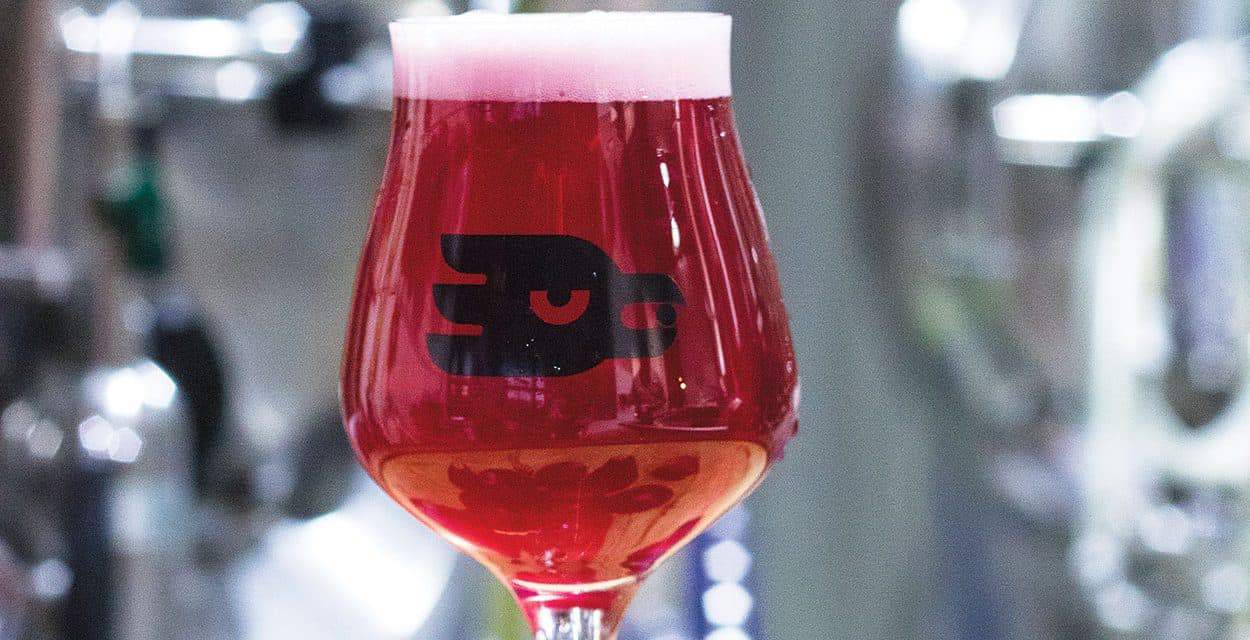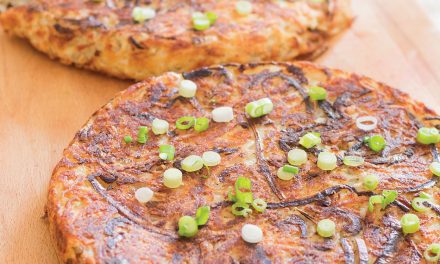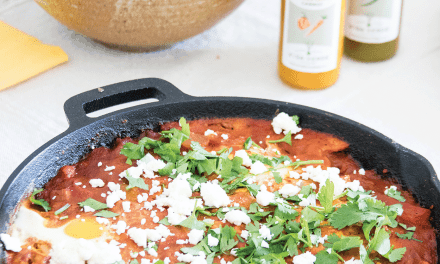From Homebrew Recipe to Large-Scale Success
By Joshua Johnson

Prickly Pear Gose, photo by Stephanie Cameron.
It started with a conversation in late September 2017. I sat at the bar in Marble Brewery’s recently constructed Northeast Heights taproom/brewery, “the Mavlab” among Marble in-the-knows, talking with brewer Josh Trujillo. Outside, a smattering of prickly pear cactus fruits, or tunas, stained the sidewalks with fuchsia polka dots. We saw an opportunity. We agreed to a little homework—we’d each put pins in our Albuquerque maps where the best stands of prickly pear cacti bore juicy ripe tunas and, once we’d discovered enough fruit, we’d harvest them and make something delicious. We wouldn’t let our plan go flat in the annals of bar talk; dissolve it did not.
As it turned out, Trujillo’s assistant brewer, Greg Dupy, had a couple homebrew recipes up his sleeve from some prickly pear meads and a gose he had brewed years ago. This year, however, the two brewers dreamed big, aiming to produce enough for public quaffing. They settled on a recipe for a gose—a lightly Lactobacillus delbrueckii soured, slightly salted, and coriander-seasoned brew with an alcohol percentage between four and five.
During the next couple weeks, I pedaled my bike around Albuquerque in search of the choicest prickly pear stands. I noticed that while the cactus patches on the fringe of town had been all but denuded by coyotes, the urban plants bore pads crowded with ripe fruits. When Dupy and I compared notes, it became clear that the overwhelming bounty of fruit was on a specific type of prickly pear—a thornless variety that I could best identify as Opuntia cacanapa “Ellisiana,” a strikingly beautiful hybrid well adapted to the New Mexico high desert.
This urban, thornless cactus reflects grand, though all-but-forgotten, agricultural visions. In the late nineteenth century, plant hybridizers turned their attention to cacti as a potential livestock forage in the desert southwest, where native grasses were neither abundant nor sufficient to sustain dense populations of cattle. In times of drought, ranchers occasionally fed animals with native thorny species—accounts of bovine mouths crimson with blood were not uncommon. Plant breeders like Luther Burbank, who inscribed his named indelibly in seed catalogs and on grocery shelves worldwide, saw in this predicament an opportunity. If he could hybridize a prickly pear cactus devoid of large spines, he would be able to transform and populate an entire landscape. Although, for many reasons, the slow-growing, spineless varieties of prickly pear did not take hold as a rancher’s cornucopia, they have filled a niche as a useful urban landscape ornament. Burbank’s labor and vision for a fruitful desert landscape, in a small and circuitous way, produced this beer.
So, on a nippy, mid-October Saturday morning, we donned our best approximations of thorn-resistant foraging gear, dug the lap belts from underneath the bench seat of Trujillo’s 1972 GMC pickup (adorned with rooster talons dangling like stuffed dice from the rear-view mirror), and headed out to harvest a truly low-hanging fruit. We checked the boxes on our lists: gloves, protective eyewear, and barbecue tongs. I was also thankful I’d found a thirty-six-inch “grabbing stick” that belonged to my grandfather, and some canvas over-sleeves that my grandmother used as armor against rose thorns. We all contributed buckets and tubs, and Trujillo lined a fifty-gallon drum with plastic, into which all the fruits would be transferred. With the steel drum tightly strapped in the pickup bed, and permission from the landowners, we were ready to harvest.

Left: Greg Dupy and Josh Trujillo on the hunt for prickly pears, photo by Joshua Johnson. Right top: Pressing prickly pear tunas, photo by Josh Trujillo. Right bottom: Carefully removing tunas, photo by Joshua Johnson.
After we slowly combed North Valley neighborhoods, we were astounded by the haul we’d made. Within approximately four hours we’d managed to fill every vessel in the truck with fuchsia fruits. On the scale at the Mavlab, digital ciphers exceeded the four hundred pound mark.
As for processing the fruit, Trujillo and Dupy brainstormed extensively. The biggest question was how to remove the pesky glochids most effectively (though lacking the large thorns of wild prickly pear, the tunas and pads of these varieties still contain short, hair-like thorns called glochids). Would a large chile roaster burn them off? Would the brewers need to abrade the fruit skins? Eventually, they discovered the thorns could be removed from the juice by using a large paint strainer. For juicing, a grape press was rented from Southwest Grape & Grain. Initial pressing yielded some liquid, but there was much more to be tapped. Then, friend of the brewery Zach Withers loaned a fruit grinder to pulverize the fruit, and the juice yield tripled. The brewers pasteurized the juice by heating it at 185 degrees Fahrenheit for thirty-five minutes; cooled it through a heat exchanger; and then kegged it into two fifteen-gallon stainless containers for storage. One of those kegs was injected into the side of the fermenter tank at the end of the gose’s fermentation. (Normally an aseptic fruit purée, not pure juice, is poured into the top of the fermentation tank.) All remaining pulp was fed to the Withers family’s hogs.
After three weeks of brewing, a tap opened up at the Mavlab taproom, and the ten-barrel batch of prickly pear gose was available for public consumption. The prickly pear fruit proved to be a near perfect match for the gose style, contributing notes of watermelon rind and a defining acidity while the residual sugar rounded out the mouth feel. Perhaps the most striking aspect of the beer was the vivid color imparted by the fruit. When I held up my glass, the electric hot pink liquid seemed to luminesce on its own. And then, within less than a week, and much to the chagrin of Marble’s clientele, the long-awaited gose abruptly became a mere memory. But somewhere, tucked deep within a walk-in refrigerator in Marble’s Mavlab, another fifteen gallons of prickly pear nectar sits waiting. What will be the next iteration? I’ve heard talk of a mead, and I’ve heard threats of a pale ale with Brettanomyces funk, but never fear, prickly pear beer is sure to be back on Marble’s taps again.
Edible celebrates New Mexico's food culture, season by season. We believe that knowing where our food comes from is a powerful thing. With our high-quality, aesthetically pleasing and informative publication, we inspire readers to support and celebrate the growers, producers, chefs, beverage and food artisans, and other food professionals in our community.












